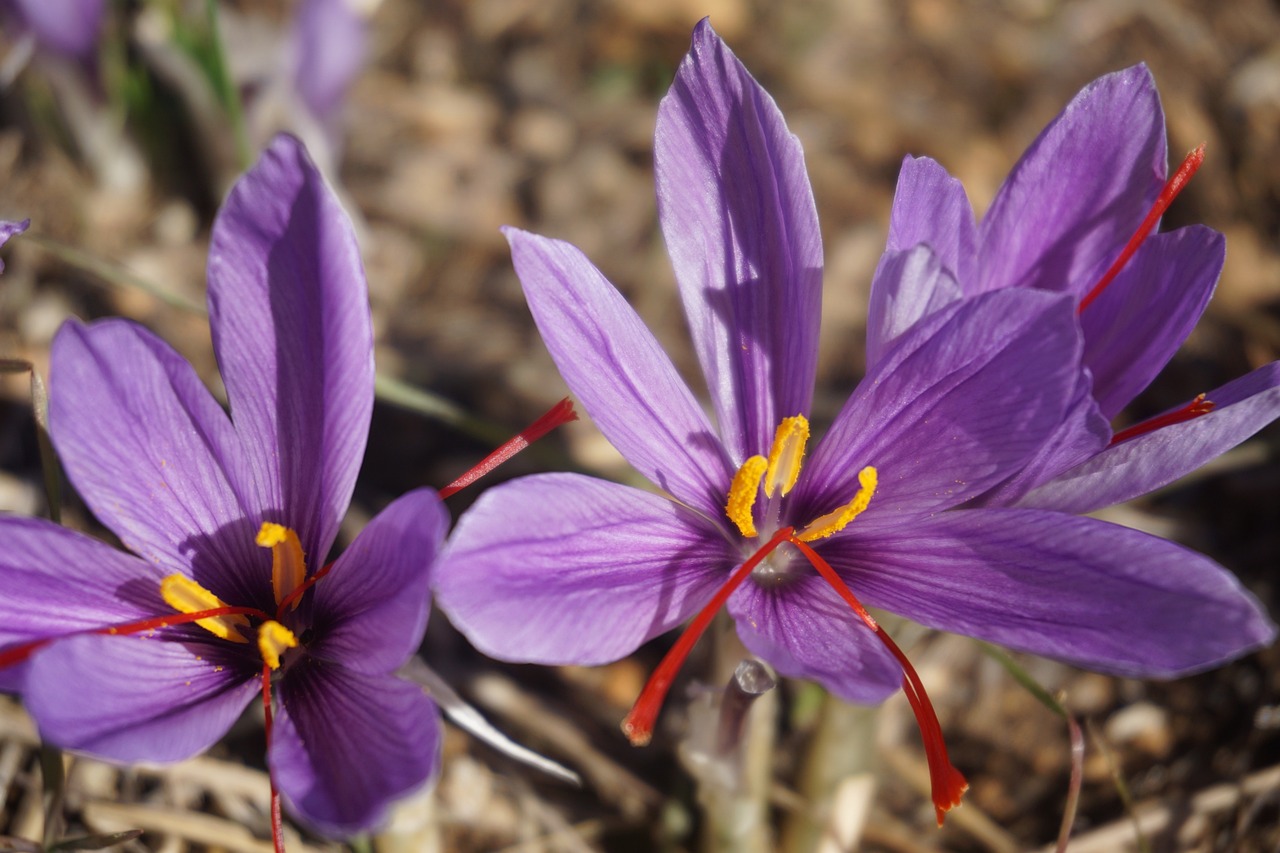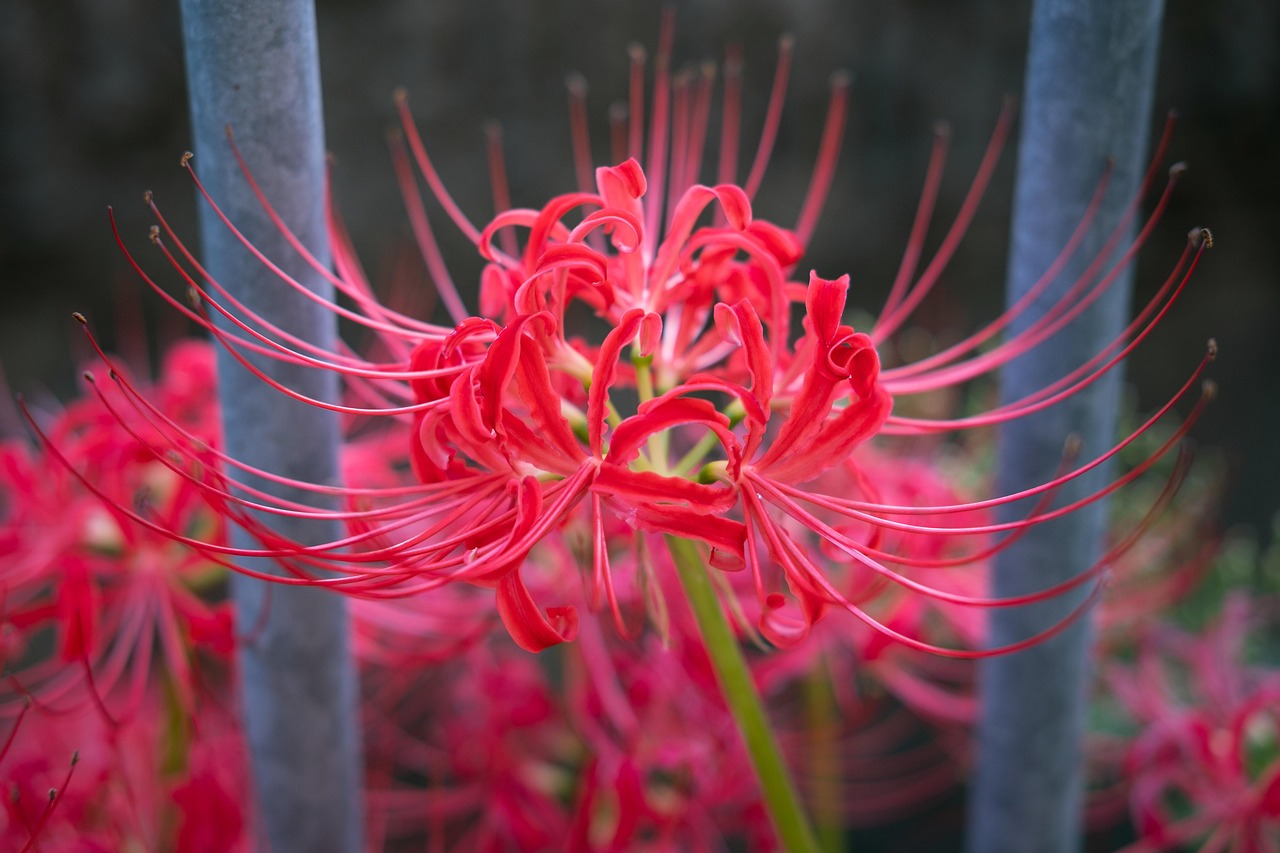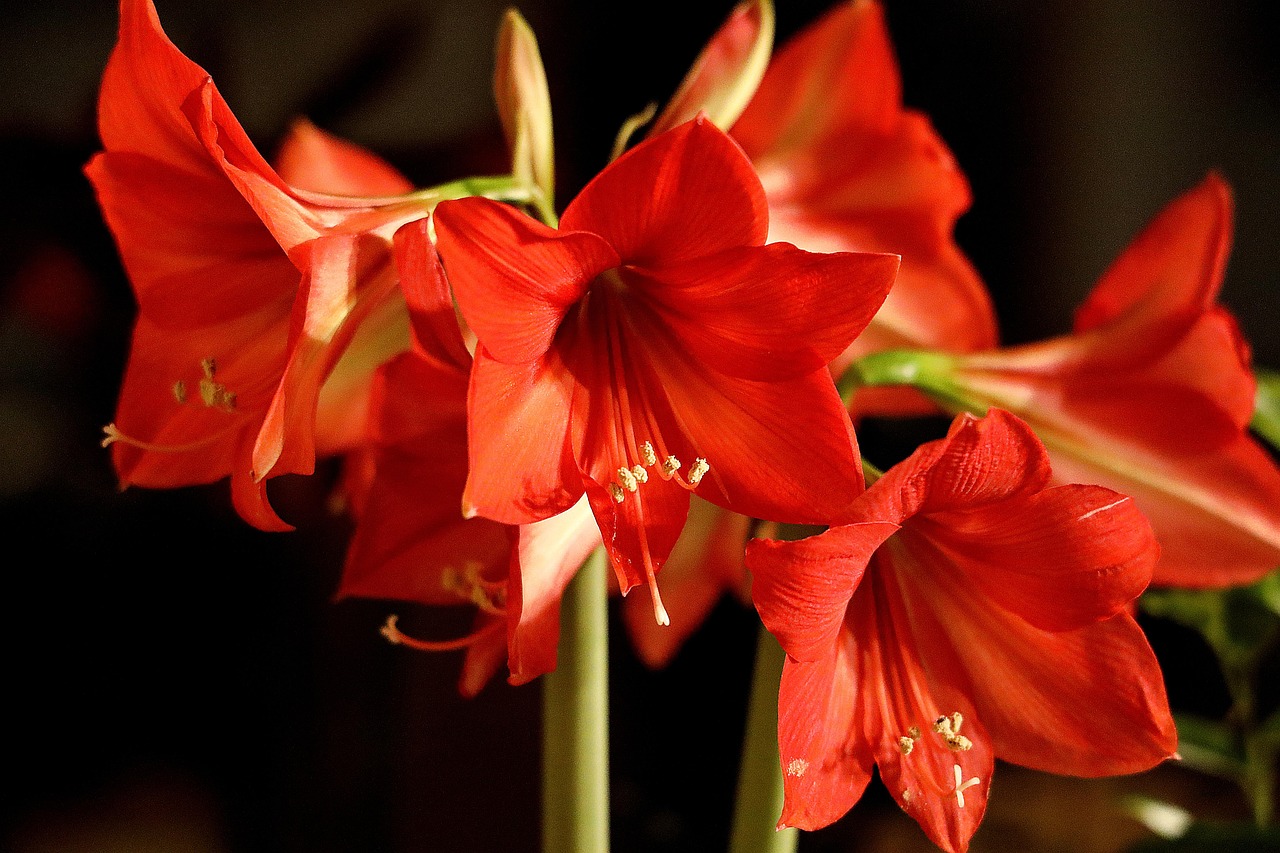Katakuri | A Flower Hidden in the Snowmelt that Announces the Time of the Mountains
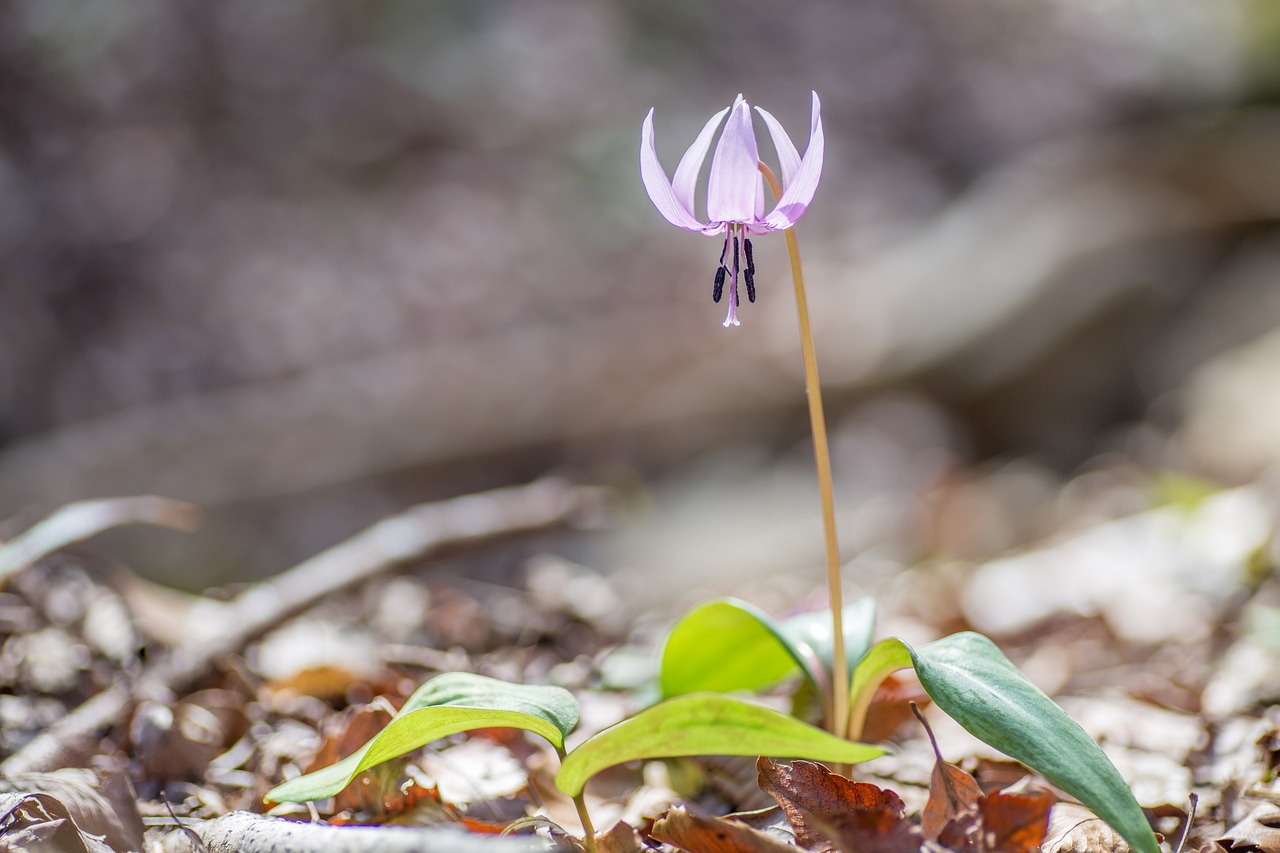
The katakuri (Erythronium japonicum) is known as a wildflower that blooms gracefully in early spring. Its clusters of violet blossoms carpeting the forest floor create a breathtaking sight that heralds the arrival of spring.
I hold this flower dear not only as a symbol of seasonal beauty, but also as one deeply tied to Japan’s nature and culture.
In this article, I will explain in detail the katakuri’s long history, basic information, cultural significance, and tips on how to grow it.
Basic Information
- Scientific name: Erythronium japonicum
- Family: Liliaceae
- Origin: Japan, China, Eastern Russia
- Appearance: Katakuri produces a stem about 6–10 cm tall with a single violet, downward-facing flower whose petals curve backward. The plant has two mottled dark green leaves. A bulb lies underground, requiring several years of growth before blooming.
- Blooming season: March to April, when katakuri blossoms announce the coming of spring.
Cultural Characteristics Worldwide
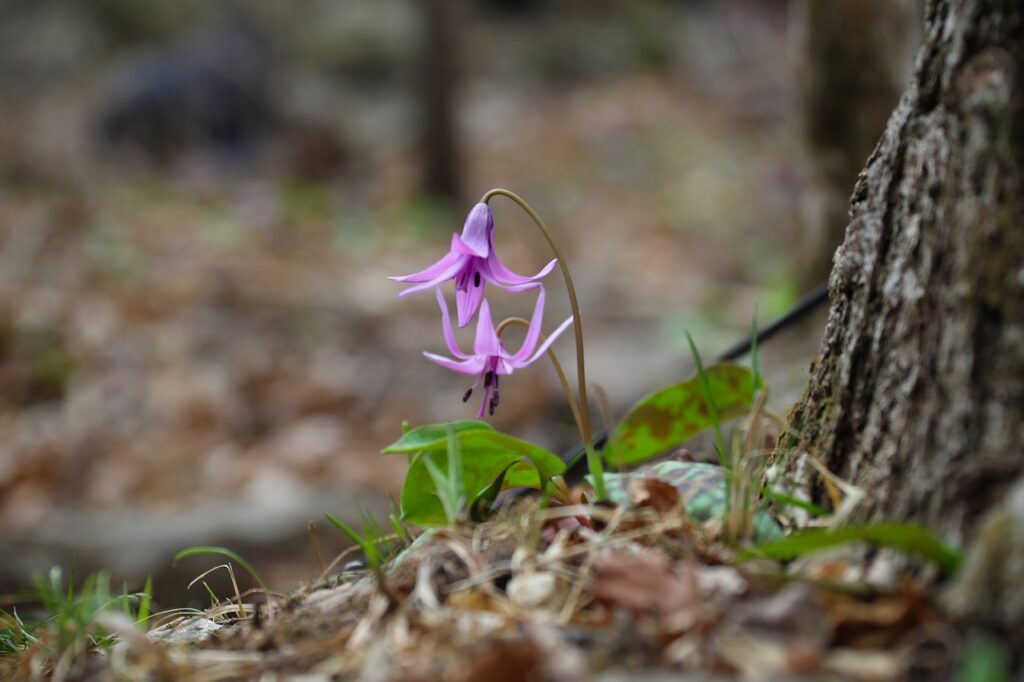
Katakuri is strongly connected to Japanese culture. In Japan, it is cherished as a “messenger of spring” and has long been loved by nature enthusiasts and hikers.
Because it blooms only for a brief period, it symbolizes transience and the fleeting beauty of nature.
The katakuri has also influenced Japanese culinary traditions. Starch extracted from its roots was once known as katakuriko (katakuri powder) and valued as a precious ingredient, although today potato starch is more commonly used. Thus, katakuri has a deep connection to food culture as well.
In China, related species of the Erythronium genus are cultivated ornamentally and appreciated for their delicate appearance in the wild. While they do not carry the same cultural symbolism as in Japan, they are still respected as graceful mountain plants.
Historical Episodes
Katakuri is mentioned in Edo-period texts, where people enjoyed its blossoms in the mountains. Even then, the sight of slopes blanketed in katakuri flowers was considered extraordinary.
Its starch, too, became widely used during the Edo period. Extracting it required a laborious process and many roots, making it extremely valuable. Though rarely harvested today, katakuri starch was once indispensable for traditional sweets and cooking.
Katakuri habitats have long been protected by local communities, and even today they are treasured as natural and cultural assets as well as tourist attractions.
Gardening Advice
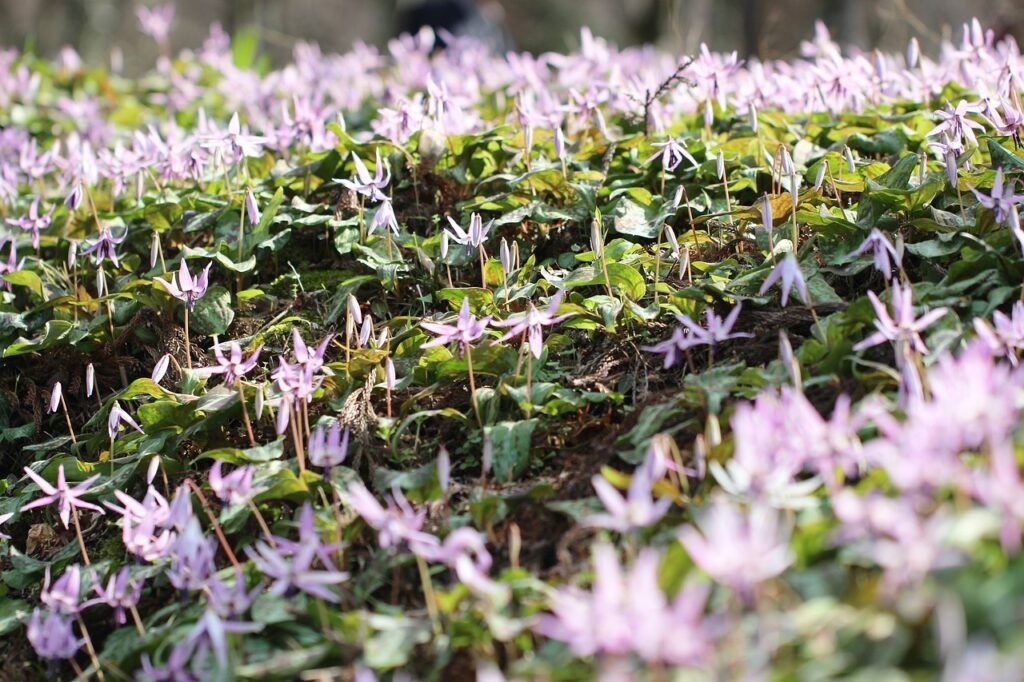
Katakuri grows slowly in natural settings, so cultivating it requires patience.
It thrives in moist, semi-shaded environments, such as woodland conditions. The ideal soil is loose, rich in leaf mold, and moisture-retentive. Bulbs should be planted in autumn and allowed to rest through winter.
Water moderately, ensuring the soil does not dry out. Since its roots are delicate, transplanting should be avoided or done with great care. Fertilizer is not essential, but diluted liquid fertilizer during the growing season can help.
Using fallen leaves as mulch helps retain moisture and recreates natural conditions.
Conclusion
The katakuri is a beautiful symbol of spring in Japan, with a rich cultural and historical background. Although it may be somewhat challenging to cultivate, by recreating natural conditions you can enjoy its delicate blossoms at home.
I invite you to try growing katakuri and experience the fleeting yet enchanting world of its early spring flowers.


